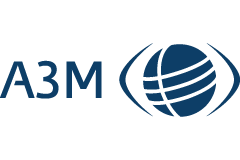Frequently Asked
Questions
We attach great importance to the intuitive usability of our systems and make every effort to provide our users with all the information they need about our services. However, we have received a number of questions regarding our Global Monitoring System, which we would like to answer here.
Global monitoring events are fed from a variety of sources. Our travel security analysts monitor and evaluate hundreds of sources every day. Among other things, special software is used to search a database of almost 300,000 sources for relevant news. In addition, news agencies (including dpa and AFP), various apps, RSS feeds, newsletters, social media (especially Twitter), research runs adapted to time zones, hundreds of country-specific news sites and websites of foreign ministries and other authorities are used.
Global Monitoring includes all reports that are relevant for tourism and business travel. This includes all travel-restricting, travel-preventing and security-relevant developments. In addition, warnings from authorities and relevant reports with high media coverage are included.
The rating is based on a five-point scale. As the different event categories are not comparable, the ratings are based on rules defined individually for each category. Important factors are the number of potentially affected travellers, the extent of the impact, the deviation from the normal state and the duration of the restrictions.
Level 1 is used for only announced events that did not occur after inclusion in the Global Monitoring System and had no impact (e.g. strikes, tsunamis). In the case of a Level 2 classification, travellers should check whether they are affected, as these are indications that a low risk is to be expected, only a few travellers are affected (e.g. when travelling to remote areas) or there is an unclear risk (e.g. severe weather warnings). From level 3, special precautions should generally be observed and travel behaviour adapted accordingly (e.g. by avoiding areas affected by violent protests).
The affected locations mentioned by the sources are marked on the map with colouring. The red colouring stands for a high hazard or major restrictions, in orange areas there is an increased hazard or potential restrictions and all areas where a low risk or no significant restrictions are to be expected are coloured yellow. The three signal colours help to assess the possible impacts, but they must always be seen in connection with the event level, as the hazards or restrictions at high levels are significantly higher than at low event levels, even in areas coloured yellow.
Events are updated as soon as important details become available, the situation worsens or further locations are affected by the event. In addition, long-lasting events are integrated into a research process and regularly updated. Events that have an impact over several weeks and months are also mapped in the Country Information.
Global Monitoring includes daily events and announcements that will become relevant within the next few days or weeks. In the Country Information, on the other hand, long-term developments and the general situation on the ground are mapped, while current developments are only included if they have a particularly high impact. In the Destination Manager, travel restrictions that occur in connection with the COVID 19 pandemic are mapped in detail.
For media monitoring and events, we mainly take major international media, local media in English and local languages, German-language leading media and authorities. State-controlled media and social media are usually only used after further screening.
In Global Monitoring, all date announcements, demonstration announcements and authority warnings (environmental events, terror warnings, etc.) are included. These include, for example, major events that significantly restrict traffic and public life, and elections that affect the security situation through protests and violent incidents in the run-up to or after the announcement of the election results.
An event is assigned to one of 41 categories from the fields of meteorology, environment, geology, biology, health, politics and security, transport and technology.
In the Global Monitoring Alert System, the customer can configure their travel alerts based on the categories and classifications so that only those messages are transmitted that are important for the corresponding recipients.
Situation-specific behavioural instructions issued by authorities are reproduced in the global monitoring event. In addition, general recommendations for action are attached to each event. In most cases, an outlook is also given and the consequences to be expected from an event are presented.
Through a shift service and our employees in South Korea, we ensure coverage around the clock, 365 days a year. Events such as earthquakes, volcanic activity and tropical storms enter the system directly via interfaces, all other events are validated manually and fed into the system.
